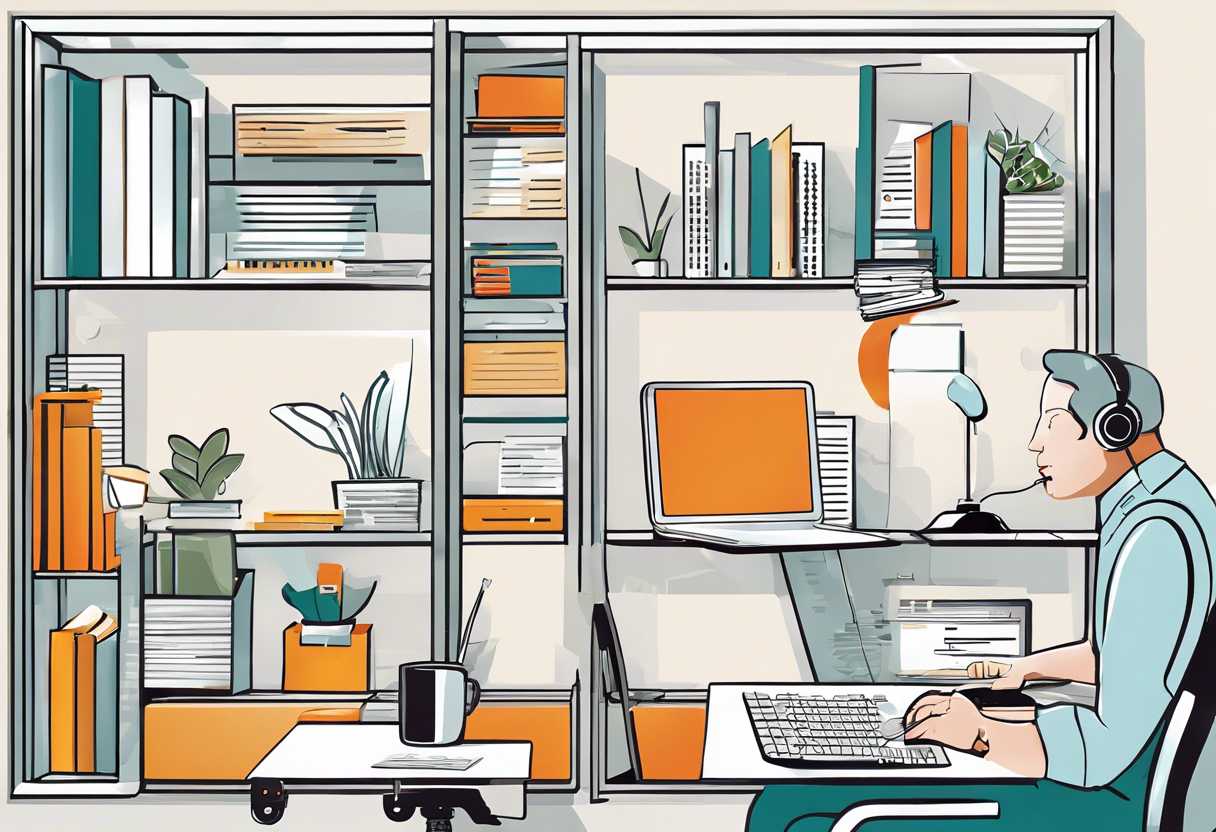Are you looking to enhance team communication within your organization? Effective communication is the cornerstone of successful teamwork, and in this blog post, we will explore six strategies and tips to help you improve team communication. From building trust and transparency to implementing technology for seamless communication, we will cover key areas that can make a significant impact on your team’s collaboration and productivity. Join us as we delve into the essential elements of effective team communication and discover practical ways to overcome barriers and enhance overall communication within your team.
Effective Communication Strategies for Team Collaboration
The Importance of Clear Communication
Clear communication is the cornerstone of successful team collaboration. When team members are able to effectively convey their ideas, thoughts, and concerns, it fosters a positive and productive working environment. Active listening is a key component of clear communication, as it ensures that all team members feel heard and valued.
Utilizing Technology for Seamless Communication
With the advancement of technology, there are numerous tools and platforms available to facilitate seamless communication within a team. Project management software such as Trello or Asana can help keep everyone on the same page, while video conferencing tools like Zoom or Microsoft Teams enable face-to-face communication, even when team members are geographically dispersed.
Establishing Clear Protocols and Expectations
Setting clear protocols and expectations for communication is essential for effective team collaboration. This includes establishing response times for emails and messages, as well as outlining meeting agendas to ensure that discussions stay focused and productive. Additionally, creating a communication hierarchy can help streamline decision-making processes and prevent misunderstandings.

Building Trust and Transparency in Team Communication
The Importance of Trust in Team Communication
Trust is the foundation of any successful team communication. When team members trust each other, they are more likely to be open and honest in their communication, leading to better collaboration and problem-solving. Building trust takes time and effort, but it is essential for creating a positive and productive team environment.
Transparency in Team Communication
Transparency is another key element in effective team communication. When team members are transparent with each other, they share information openly and honestly, which helps to build trust and foster a sense of unity within the team. Transparent communication also helps to prevent misunderstandings and conflicts, as everyone is on the same page.
Strategies for Building Trust and Transparency
- Encourage open and honest communication
- Lead by example and be transparent in your own communication
- Provide regular feedback and recognition for good communication practices
- Establish clear expectations and guidelines for communication within the team

Enhancing Productivity Through Clear and Open Communication
The Importance of Clear Communication in the Workplace
Clear communication is essential for productivity in the workplace. When team members are able to clearly express their ideas, thoughts, and concerns, it leads to better understanding and collaboration. This can result in more efficient problem-solving, faster decision-making, and ultimately, increased productivity. Additionally, clear communication helps to minimize misunderstandings and conflicts, which can be a drain on time and resources.
Creating an Open Communication Culture
Open communication is about creating an environment where team members feel comfortable sharing their thoughts and opinions without fear of judgment or reprisal. This can be achieved through regular team meetings, open-door policies, and the use of collaborative tools and platforms. When team members feel heard and valued, they are more likely to contribute their best ideas and work together towards common goals.
Tools and Strategies for Improving Communication
There are a variety of tools and strategies that can be used to enhance communication in the workplace. This can include the use of project management software, instant messaging platforms, and video conferencing tools. Additionally, establishing clear communication protocols and guidelines can help to ensure that everyone is on the same page. Regular feedback sessions and performance reviews can also provide opportunities for open and honest communication.
Overcoming Barriers to Effective Team Communication
Understanding Different Communication Styles
One of the biggest barriers to effective team communication is the differences in communication styles among team members. Some individuals may prefer direct and assertive communication, while others may lean towards a more passive and indirect approach. Understanding and acknowledging these differences is crucial for fostering open and effective communication within the team. By recognizing and respecting each team member’s communication style, it becomes easier to tailor communication strategies to ensure that everyone feels heard and understood.
Establishing Clear Expectations
Another common barrier to effective team communication is the lack of clear expectations. When team members are unsure about their roles, responsibilities, and goals, it can lead to confusion and misunderstandings. By establishing clear expectations from the outset, teams can minimize communication breakdowns and work towards a common objective. This can be achieved through regular team meetings, setting SMART goals, and providing regular feedback to ensure that everyone is on the same page.
Utilizing Technology and Tools
In today’s digital age, technology plays a crucial role in overcoming barriers to effective team communication. Utilizing communication tools such as project management software, instant messaging platforms, and video conferencing can help bridge the gap between remote team members and streamline communication processes. These tools not only facilitate real-time communication but also provide a centralized platform for sharing information, collaborating on projects, and tracking progress. By leveraging the right technology, teams can enhance their communication efficiency and productivity.
Implementing Technology for Seamless Team Communication
The Importance of Seamless Team Communication
Effective communication is crucial for the success of any team. It ensures that everyone is on the same page, reduces misunderstandings, and fosters collaboration. With the rise of remote work and global teams, the need for seamless communication has become even more critical. Implementing technology solutions can help bridge the gap and facilitate smooth communication among team members.
Choosing the Right Communication Tools
When it comes to selecting the right technology for team communication, it’s essential to consider the specific needs and preferences of your team. There are various tools available in the market, each with its own set of features and capabilities. Whether it’s instant messaging, video conferencing, or project management platforms, finding the right fit for your team is key to ensuring seamless communication.
- Instant Messaging: Tools like Slack, Microsoft Teams, or WhatsApp offer real-time communication and file sharing, making it easy for team members to stay connected.
- Video Conferencing: Platforms such as Zoom, Google Meet, or Skype enable face-to-face interactions, regardless of geographical locations, fostering a sense of connection among team members.
- Project Management: Tools like Asana, Trello, or Jira help teams organize tasks, track progress, and collaborate on projects, streamlining communication and workflow.
Best Practices for Implementation
Implementing technology for seamless team communication requires a strategic approach to ensure its effectiveness. It’s essential to establish clear guidelines and best practices to maximize the benefits of these tools.
- Training and Onboarding: Provide thorough training and onboarding for team members to familiarize them with the chosen communication tools and ensure they are used effectively.
- Establish Communication Etiquette: Set guidelines for communication etiquette, such as response times, appropriate channels for different types of communication, and the use of emojis or gifs to maintain a professional yet engaging tone.
- Regular Feedback and Evaluation: Encourage feedback from team members on the use of communication tools and regularly evaluate their effectiveness to make necessary adjustments.
Conclusion
Improving team communication is essential for fostering a collaborative and productive work environment. By implementing the strategies and tips discussed in this blog post, you can enhance communication within your team and ultimately drive better results for your organization.
Effective communication strategies, such as active listening and clear articulation, lay the foundation for successful team collaboration. Building trust and transparency within your team can help create a supportive and open communication culture, leading to stronger relationships and improved problem-solving abilities.
Furthermore, enhancing productivity through clear and open communication can streamline processes and ensure that everyone is aligned towards common goals. Overcoming barriers to effective team communication, such as language barriers or conflicting personalities, requires patience and understanding, but the payoff is well worth the effort.
Lastly, implementing technology for seamless team communication can revolutionize the way your team interacts and collaborates. Whether it’s through project management tools, video conferencing platforms, or instant messaging apps, leveraging technology can bridge gaps and facilitate efficient communication.
As you strive to improve team communication, remember that it’s an ongoing process that requires dedication and adaptability. By prioritizing open and honest communication, you can create a work environment where ideas flow freely, conflicts are resolved constructively, and everyone feels valued and heard.
Take the time to assess your team’s communication dynamics and consider how you can apply the strategies and tips outlined in this blog post. By making a conscious effort to improve team communication, you can unlock the full potential of your team and achieve greater success together.
Start implementing these strategies today and watch as your team communication transforms for the better.

